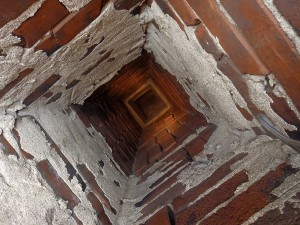Four Most Common Chimney Problems in Long Island Roofing
Chimneys are beautiful addition in Long Island roofing. They enhance the aesthetic appeal of houses both inside and outside. They are not, however, low-maintenance addition to homes because homeowners will assume a new set of responsibilities.
Chimney problems could have direct consequences on the interior of the house and its occupants. An annual chimney checkup is highly recommended even if you do not notice any problems while regularly using the chimney. Hiring a professional to conduct the inspection is best rather than doing it yourself because the risks posed by defective chimneys are just too dangerous.
Some of the most common chimney problems in a Long Island Roofing are:
1. Obstruction
If you see smoke blowing inside your house instead of going up the chimney, an obstruction is the most probable cause of the problem. The first area to inspect is the flue. Most chimney problems are caused by a blocked flue. Some causes of flue blockage are bird nests, soot and debris that may have accidentally fallen from above.
Engage the services of a professional to assess the cause of the problem. If a straightforward blockage is confirmed as the cause of the smoke, you can remove it by using specialized tools such as chimney brush, rods and adaptors. Always observe caution when working on elevated places.
Just be aware that there are causes for smoke to get inside your house other than obstruction. An updraft can prevent smoke from going up the chimney that does not have sufficient height. The negative air pressure caused by an airtight house could draw smoke inside instead of going up the chimney.
2. Flue Cracks
The lining inside the chimney is subjected to extreme elements such as heat and deposit of flammable substances. Through time and neglect, the lining will deteriorate and cracks start to form on the flue. Since the lining protects other parts from combusting, refrain from using the fireplace until the damaged parts are replaced.
3. Damaged Masonry
A chimney that has been neglected could crack, crumble and even collapse. A cracked mortar will allow water to penetrate, which ultimately find its way inside the house. To remedy, simply remove the damaged mortar and replace it with a new one to improve the stability and enhance protection.
4. Critters
Some animals are attracted by chimneys because they are relatively isolated areas where they feel safe from predators. Bats, in particular, roost in chimneys and present inconveniences to homeowners. They carry diseases, and their droppings are smelly and could transmit these diseases to humans. An easy solution for the problem is the installation of an inexpensive and easy-to-install chimney cap.
